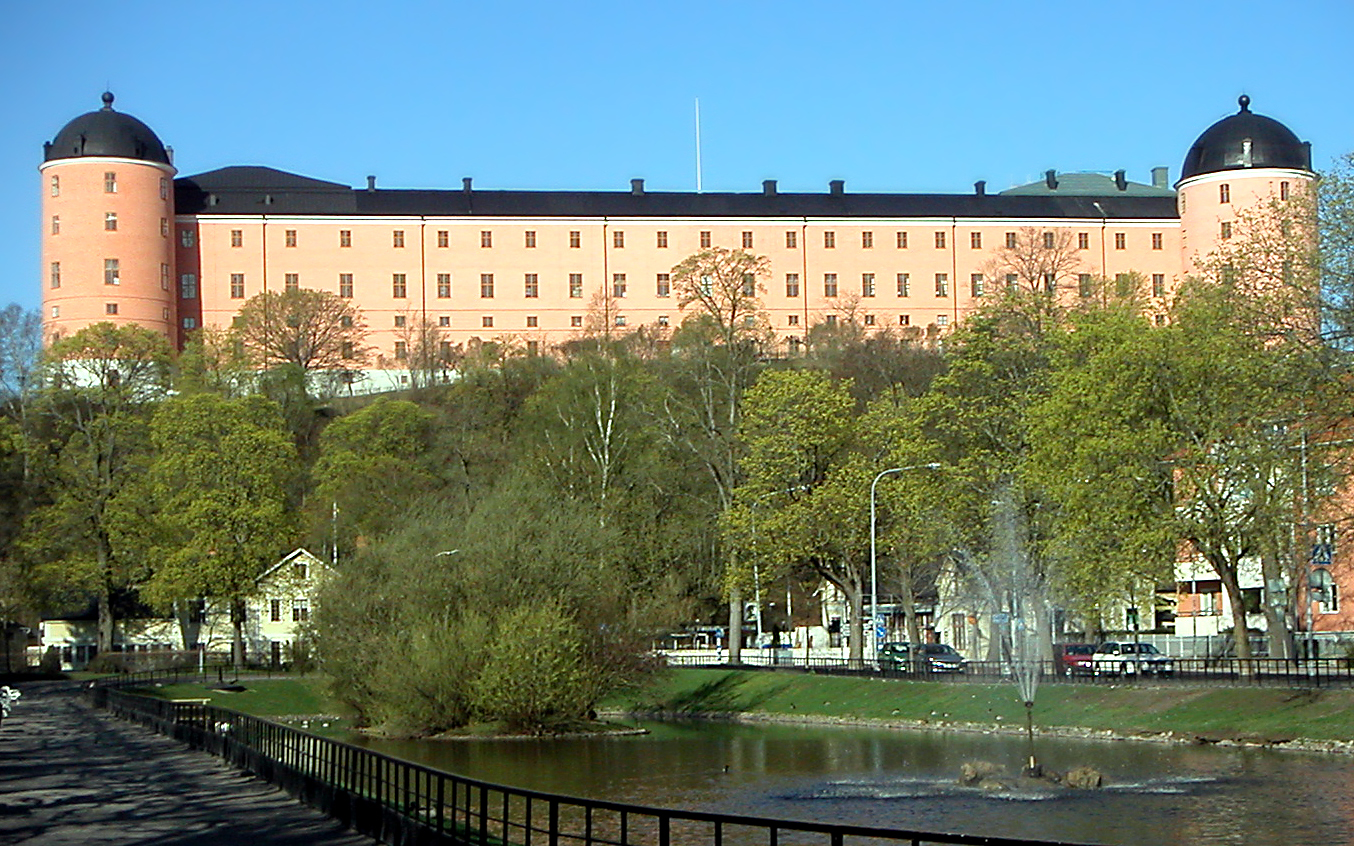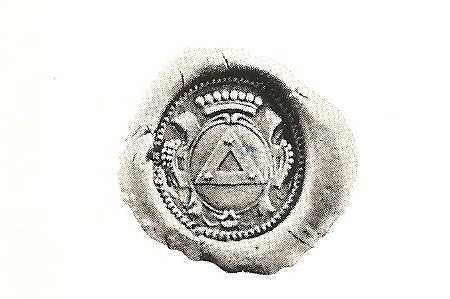|
Emil Oskar Nobel
Emil Oskar Nobel ( , ; a.k.a. Oscar; 29 October 1843 – 3 September 1864) was a member of the Nobel family. Biography Emil Nobel was born in Saint Petersburg, Russia. He was the youngest son of Immanuel Nobel (1801–1872) and Karolina Andrietta Ahlsell (1803–1889). He was the brother of Robert Nobel, Ludvig Nobel and Alfred Nobel. In 1842, Immanuel Nobel opened a workshop with foundry in St. Petersburg returning to Sweden in 1859 with his youngest sons Emil and Alfred. Emil was the only member of the family to go to college, attending the University of Uppsala. Emil died together with several other factory workers, the victim of an explosion while experimenting with nitroglycerine at Nobels Sprängolja, his father's factory at Heleneborg in Stockholm. At the time, Nobel was a student in Uppsala, but also helped in the factory. After the explosion, production of nitroglycerin was banned in the factory, but continued close to Heleneborg on an anchored barge in a bay of La ... [...More Info...] [...Related Items...] OR: [Wikipedia] [Google] [Baidu] |
Stockholm
Stockholm (; ) is the Capital city, capital and List of urban areas in Sweden by population, most populous city of Sweden, as well as the List of urban areas in the Nordic countries, largest urban area in the Nordic countries. Approximately 1 million people live in the Stockholm Municipality, municipality, with 1.6 million in the Stockholm urban area, urban area, and 2.5 million in the Metropolitan Stockholm, metropolitan area. The city stretches across fourteen islands where Mälaren, Lake Mälaren flows into the Baltic Sea. Outside the city to the east, and along the coast, is the island chain of the Stockholm archipelago. The area has been settled since the Stone Age, in the 6th millennium BC, and was founded as a city in 1252 by Swedish statesman Birger Jarl. The city serves as the county seat of Stockholm County. Stockholm is the cultural, media, political, and economic centre of Sweden. The Stockholm region alone accounts for over a third of the country's Gros ... [...More Info...] [...Related Items...] OR: [Wikipedia] [Google] [Baidu] |
Deaths From Explosion
Death is the end of life; the irreversible cessation of all biological functions that sustain a living organism. Death eventually and inevitably occurs in all organisms. The remains of a former organism normally begin to decompose shortly after death. Some organisms, such as '' Turritopsis dohrnii'', are biologically immortal; however, they can still die from means other than aging. Death is generally applied to whole organisms; the equivalent for individual components of an organism, such as cells or tissues, is necrosis. Something that is not considered an organism, such as a virus, can be physically destroyed but is not said ''to die'', as a virus is not considered alive in the first place. As of the early 21st century, 56 million people die per year. The most common reason is aging, followed by cardiovascular disease, which is a disease that affects the heart or blood vessels. As of 2022, an estimated total of almost 110 billion humans have died, or roughly 94% of ... [...More Info...] [...Related Items...] OR: [Wikipedia] [Google] [Baidu] |
Uppsala University Alumni
Uppsala ( ; ; archaically spelled ''Upsala'') is the capital of Uppsala County and the fourth-largest city in Sweden, after Stockholm, Gothenburg, and Malmö. It had 177,074 inhabitants in 2019. Located north of the capital Stockholm, it is also the seat of Uppsala Municipality. Since 1164, Uppsala has been the ecclesiastical centre of Sweden, being the seat of the Archbishop of the Church of Sweden. Uppsala is home to Scandinavia's largest cathedral – Uppsala Cathedral, which was the frequent site of the coronation of the Swedish monarch until the late 19th century. Uppsala Castle, built by King Gustav Vasa, served as one of the royal residences of the Swedish monarchs, and was expanded several times over its history, making Uppsala the secondary capital of Sweden during its greatest extent. Today, it serves as the residence of the Governor of Uppsala County. Founded in 1477, Uppsala University is the oldest centre of higher education in Scandinavia. Among the many ... [...More Info...] [...Related Items...] OR: [Wikipedia] [Google] [Baidu] |
1864 Deaths
Events January * January 13 – American songwriter Stephen Foster (" Oh! Susanna", " Old Folks at Home") dies aged 37 in New York City, leaving a scrap of paper reading "Dear friends and gentle hearts". His parlor song " Beautiful Dreamer" is published in March. * January 16 – Denmark rejects an Austrian-Prussian ultimatum to repeal the Danish Constitution, which says that Schleswig-Holstein is part of Denmark. * January 21 – New Zealand Wars: The Tauranga campaign begins. February * February – John Wisden publishes '' The Cricketer's Almanack for the year 1864'' in England; it will go on to become the major annual cricket reference publication. * February 1 – Danish-Prussian War ( Second Schleswig War): 57,000 Austrian and Prussian troops cross the Eider River into Denmark. * February 15 – Heineken Brewery is founded in the Netherlands. *American Civil War: ** February 17 – The tiny Confederate hand-propelled subma ... [...More Info...] [...Related Items...] OR: [Wikipedia] [Google] [Baidu] |
1843 Births
Events January–March * January 3 – The '' Illustrated Treatise on the Maritime Kingdoms'' (海國圖志, ''Hǎiguó Túzhì'') compiled by Wei Yuan and others, the first significant Chinese work on the West, is published in China. * January 6 – Antarctic explorer James Clark Ross discovers Snow Hill Island. * January 20 – Honório Hermeto Carneiro Leão, Marquis of Paraná is appointed by the Emperor, Dom Pedro, as the leader of the Brazilian Council of Ministers, although the office of Prime Minister of Brazil will not be officially created until 1847. * January ** Serial publication of Charles Dickens's novel ''Martin Chuzzlewit'' begins in London; in the July chapters, he lands his hero in the United States. ** Edgar Allan Poe's short story " The Tell-Tale Heart" is published in ''The Pioneer'', a Boston magazine. ** The Quaker magazine '' The Friend'' is first published in London. * February 3 – Uruguayan Civil War: Argentina supports Oribe of Uruguay, an ... [...More Info...] [...Related Items...] OR: [Wikipedia] [Google] [Baidu] |
Diatomaceous Earth
Diatomaceous earth ( ), also known as diatomite ( ), celite, or kieselguhr, is a naturally occurring, soft, siliceous rock, siliceous sedimentary rock that can be crumbled into a fine white to off-white powder. It has a particle size ranging from more than 3 millimeter, mm to less than 1 micrometre, μm, but typically 10 to 200 μm. Depending on the granularity, this powder can have an abrasive feel, similar to pumice powder, and has a low density as a result of its high porosity. The typical chemical composition of oven-dried diatomaceous earth is 80–90% silica, with 2–4% aluminum oxide, alumina (attributed mostly to clay minerals), and 0.5–2% iron oxide. Diatomaceous earth consists of the fossilized remains of diatoms, a type of hard-shelled microalgae, that have accumulated over millions of years. It is used as a filtration aid, mild abrasive in products including metal polishes and toothpaste, mechanical insecticide, absorption (chemistry), absorbent for ... [...More Info...] [...Related Items...] OR: [Wikipedia] [Google] [Baidu] |
Dynamite
Dynamite is an explosive made of nitroglycerin, sorbents (such as powdered shells or clay), and Stabilizer (chemistry), stabilizers. It was invented by the Swedish people, Swedish chemist and engineer Alfred Nobel in Geesthacht, Northern Germany, and was patented in 1867. It rapidly gained wide-scale use as a more robust alternative to the traditional gun powder, black powder explosives. It allows the use of nitroglycerine's favorable explosive properties while greatly reducing its risk of accidental detonation. History Dynamite was invented by Swedish chemist Alfred Nobel in 1866 and was the first safely manageable explosive stronger than black powder. Alfred Nobel's father, Immanuel Nobel, was an industrialist, engineer, and inventor. He built bridges and buildings in Stockholm and founded Sweden's first rubber factory. His construction work inspired him to research new methods of blasting rock that were more effective than black powder. After some bad business deals in S ... [...More Info...] [...Related Items...] OR: [Wikipedia] [Google] [Baidu] |
Lake Mälaren
A lake is often a naturally occurring, relatively large and fixed body of water on or near the Earth's surface. It is localized in a basin or interconnected basins surrounded by dry land. Lakes lie completely on land and are separate from the ocean, although they may be connected with the ocean by rivers. Lakes, as with other bodies of water, are part of the water cycle, the processes by which water moves around the Earth. Most lakes are fresh water and account for almost all the world's surface freshwater, but some are salt lakes with salinities even higher than that of seawater. Lakes vary significantly in surface area and volume of water. Lakes are typically larger and deeper than ponds, which are also water-filled basins on land, although there are no official definitions or scientific criteria distinguishing the two. Lakes are also distinct from lagoons, which are generally shallow tidal pools dammed by sandbars or other material at coastal regions of oceans or larg ... [...More Info...] [...Related Items...] OR: [Wikipedia] [Google] [Baidu] |
Heleneborg
Heleneborg is an estate on Södermalm, a part of the city of Stockholm, Sweden. It is opposite Långholmen island (home to Långholmen prison until 1975). The property was bought in 1669 by Jonas Österling and was used by the Swedish tobacco manufacturing company (''Tobakskompaniet'') for tobacco production. However, after a conflict with both the company and the royal court, Österling went bankrupt and died in poverty in 1691. His estate was burnt down in 1701. From 1739 to 1759 the estate was owned by Olof Forsberg, who produced white clay pipes on the premises. Adolph Christiernin bought the property in 1759 and continued clay pipe production until 1766. He was a very wealthy man who spent his entire fortune on a fixed idea that he could find gold in the Swedish silver mines. He named the property Heleneborg after his wife Helena Catharina Malmin. Miserably poor, he had to abandon Heleneborg in 1767. In the 1860s Heleneborg was owned by W.N. Burmester, who housed the manu ... [...More Info...] [...Related Items...] OR: [Wikipedia] [Google] [Baidu] |
Nobel Family
The Nobel family ( ), is a prominent Swedish family closely related to the history both of Sweden and of Russia in the 19th and 20th centuries. Its legacy includes its outstanding contributions to philanthropy and to the development of the armament industry and the oil industry. Some of its foremost members are Immanuel Nobel the Younger, the engineer, developer of underwater naval mines and inventor of the rotary lathe used to produce plywood, Ludvig Nobel, the founder of Branobel and one of the richest and the most important men in Russia at his time, and Alfred Nobel, the inventor of dynamite who left the major part of his estate to the creation of the Nobel Prizes. Origins The Nobel family originated from the Scanian village of Östra Nöbbelöv, hence their surname. The first member was Petrus Olai Nobelius (1655–1707) who married Wendela Rudbeck (1668–1710), sister of Olof Rudbeck the Younger, daughter of the famous Swedish scientist Olaus Rudbeck the Elder a ... [...More Info...] [...Related Items...] OR: [Wikipedia] [Google] [Baidu] |






